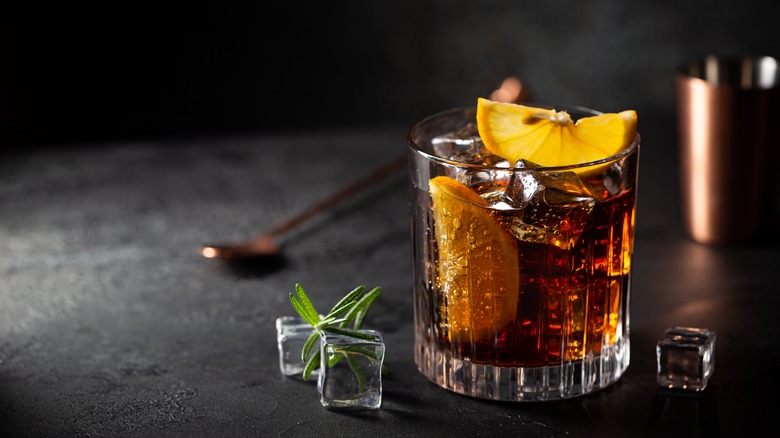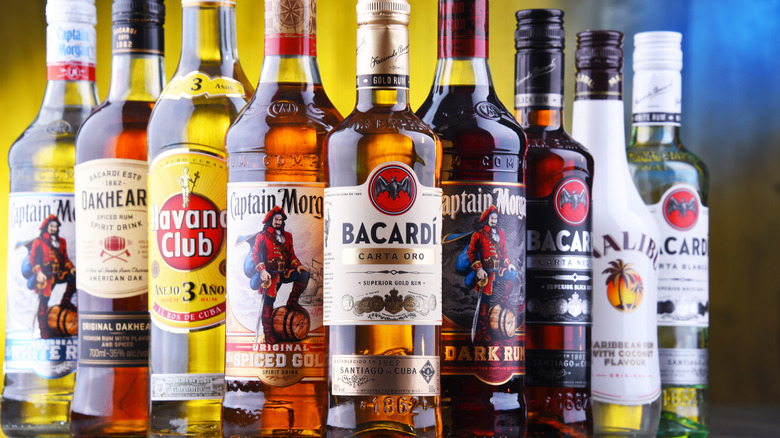Why Some Rums Are More Flavorful Than Others
Sugarcane-derived products like molasses and sugarcane juice are the base that's fermented and distilled to make rum, notes Britannica. Rum was first developed in the Caribbean, and since sugarcane has been an important Caribbean crop since the days of Christopher Columbus (via Imbibe), it should come as no surprise that island nations like Jamaica, Cuba, Puerto Rico, Haiti, Martinique, and Barbados (the first recorded rum maker, per Britannica) have long been among rum's most notable producers.
Of course, each of these countries has evolved its own distinct approach to rum production, often with historical roots in the colonial past. The Spanish style, for example, is evidenced in the lighter-bodied, often charcoal-filtered (meaning colorless) rums produced in countries like Cuba and Panama, observes Bitters and Bottles. This stylistic similarity in approach came in handy when Bacardi moved from Cuba to Puerto Rico, a shift in operations necessitated by the Cuban Revolution, per NPR.
French-colonized islands such as Martinique, Haiti, and Guadeloupe, meanwhile, pioneered the Rhum Agricole style, which substituted sugarcane juice for molasses. Rhum Agricole is also notable for its use of the column still rather than the traditional pot still, which is yet another reason these rums have such a distinctive flavor.
Factors in rum making that contribute the most to flavor
Flavor in rum is primarily determined by the choices made in the fermenting, distilling, and aging processes, according to Boothby. So when island nations developed their own production styles – often influenced by colonial history – this led to their reputations for making rums with distinctive flavor profiles.
Fermentation transforms molasses or sugarcane juice into alcohol, and in the process changes their chemistry via the creation of flavor compounds like esters, explains Boothby. But the yeasts that consume sugar to bring about this transformation also help to determine the flavors created. Fast fermentation means fewer flavor compounds while longer fermentation means more.
As Serious Eats notes, the strength rums are distilled to is yet another factor. If a high-proof rum has to be diluted to reach its ABV at bottling, more flavor compounds will be lost in the process. During distillation, the choice between pot and column stills also matters, as the former produces big-bodied rums with a full profile of esters and congeners (another flavor compound), while the latter produces lighter-bodied rums with fewer remaining flavor compounds.
Barrel or cask aging is the final piece of the puzzle. Previously used whiskey barrels are becoming increasingly popular, observes Got Rum, with the oak barrels imparting flavors in direct relation to the amount of time they are in contact with the rum. Serious Eats confirms that more aging translates to more flavors.

